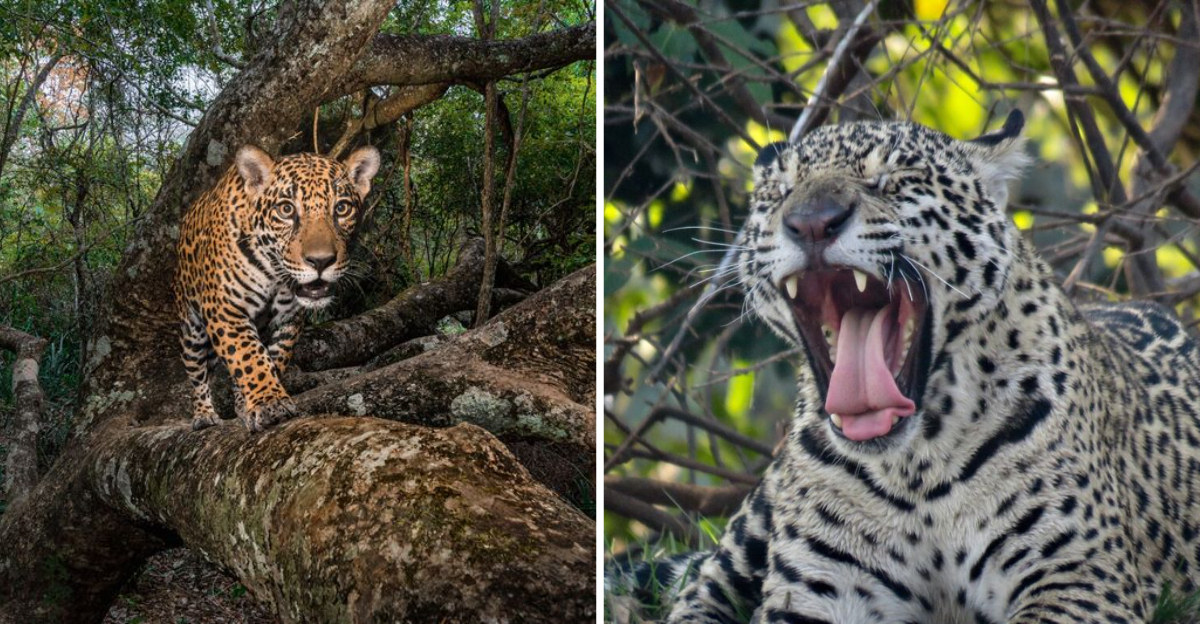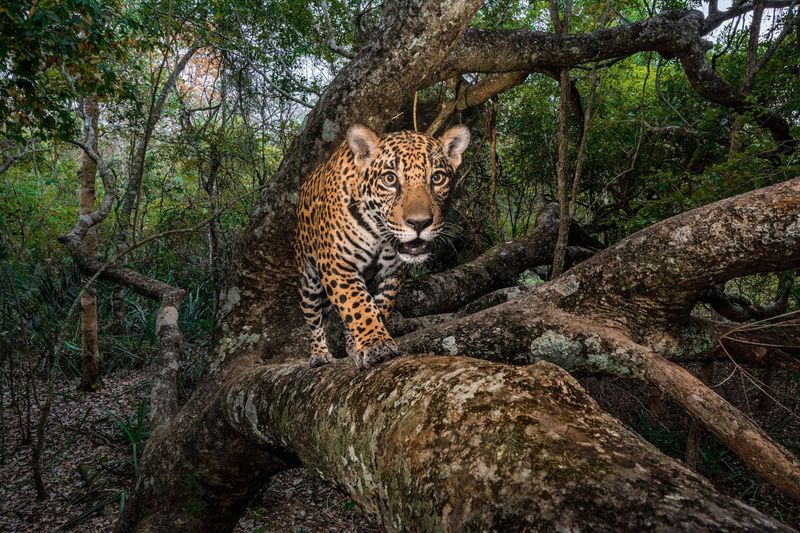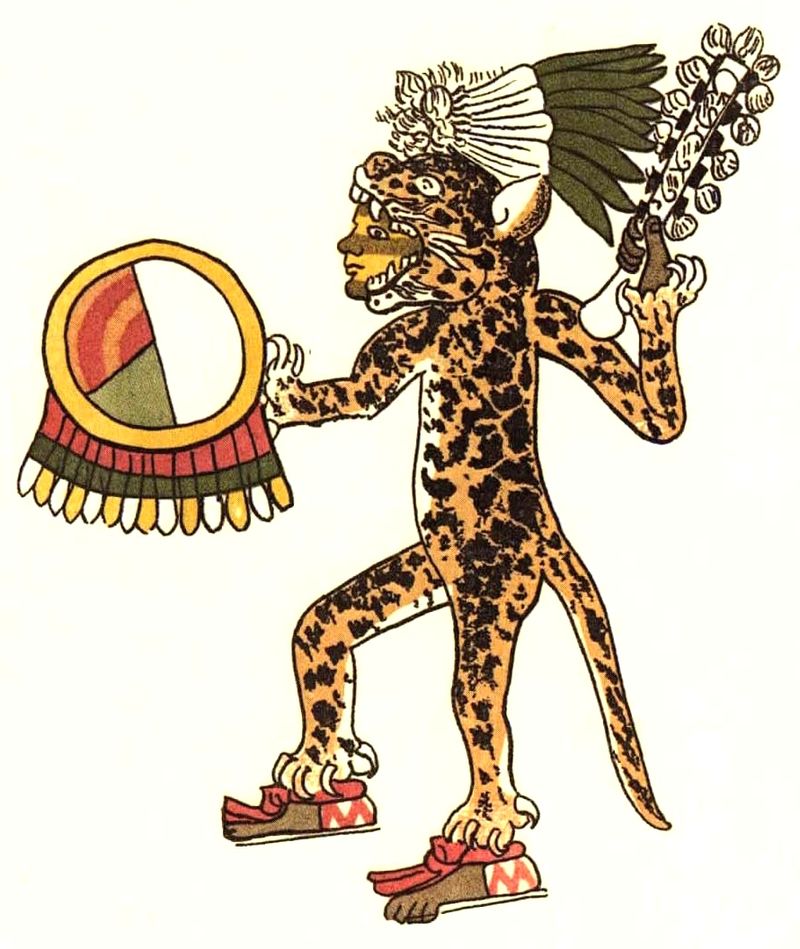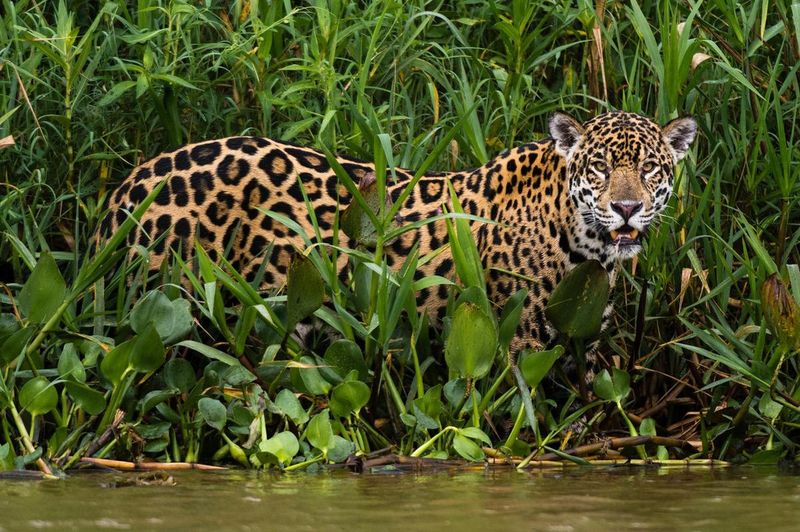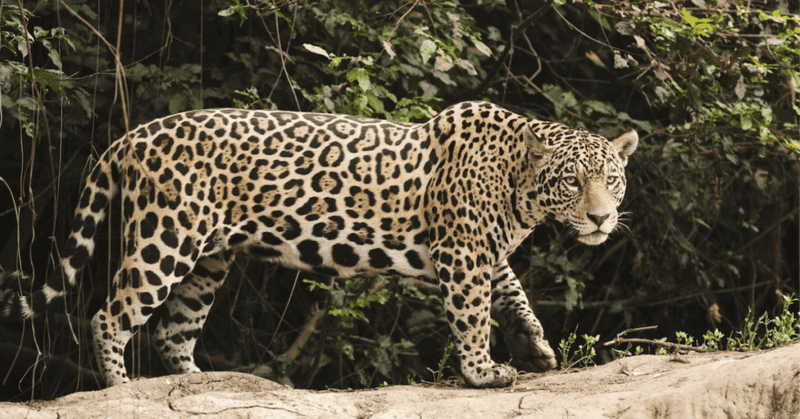📖 Table of Content:
The jaguar, often crowned the ‘King of the Jungle,’ stands as a symbol of strength and majesty in the animal kingdom. This apex predator, native to the Americas, is renowned for its unmatched power, agility, and cultural significance. In the dense rainforests and wetlands of Central and South America, the jaguar reigns supreme, playing a vital role in the ecosystem. From its physical prowess to its cultural reverence, the jaguar’s story is one of awe and grandeur.
1. Physical Characteristics and Hunting Prowess
With a build that exudes strength, the jaguar is the largest cat in the Americas. Males can weigh up to 120 kg and stretch up to 1.85 meters. Their muscular frame is complemented by powerful jaws capable of crushing skulls or turtle shells. Uniquely adept at swimming, jaguars hunt aquatic prey like caimans and fish. Their ability to thrive in diverse environments—from dense forests to wetlands—demonstrates their remarkable adaptability. Jaguars’ hunting prowess is a testament to their status as formidable predators, illustrating nature’s sheer power and precision.
2. Ecological Role
In the wild, the jaguar sits atop the food chain, playing an essential role in maintaining ecological balance. By controlling prey populations, it prevents overgrazing and supports biodiversity. Jaguars require vast territories and abundant prey, making their presence indicative of a healthy environment. Conservation efforts focus on safeguarding their habitats to ensure their survival and the overall health of the ecosystem. The jaguar’s ecological importance extends beyond its role as a predator; it is a guardian of nature’s delicate equilibrium.
3. Cultural Significance
In ancient Mesoamerican civilizations, the jaguar was revered as a powerful symbol. The Maya linked it to the underworld and night, with rulers donning jaguar pelts to signify authority. Similarly, the Aztecs esteemed the jaguar, with warriors known as ‘Jaguar Knights’ embodying its ferocity. These cultural connections showcase the deep reverence societies held for this majestic creature. Its imagery remains prevalent in art and mythology, symbolizing strength and mystery. The jaguar’s cultural significance is a testament to its enduring legacy throughout history.
4. Conservation Status
Despite its formidable presence, the jaguar faces threats from habitat loss, poaching, and human-wildlife conflict. Conservation initiatives focus on protecting habitats, reducing conflicts, and ensuring jaguars’ survival. Collaborative efforts between governments, NGOs, and local communities aim to create sustainable solutions. The jaguar’s plight reflects broader environmental challenges, emphasizing the need for concerted conservation actions. Protecting this iconic species is crucial for preserving biodiversity and maintaining ecological balance. The jaguar’s future depends on our commitment to safeguarding its natural world.
5. Adaptability and Habitat
Jaguars exhibit remarkable adaptability, thriving in diverse habitats such as rainforests, savannas, and wetlands. Their secretive nature and ability to blend into surroundings aid in hunting and survival. Jaguars’ territories can span hundreds of square kilometers, underscoring their need for extensive space. This adaptability highlights their resilience in the face of environmental changes. However, habitat fragmentation poses a significant threat, requiring focused conservation strategies. The jaguar’s ability to adapt is a testament to its evolutionary success and enduring presence in the wild.
6. Diet and Hunting Techniques
Jaguars are versatile hunters, with a diet encompassing over 85 species, including mammals, birds, and reptiles. Their stealth and strength allow them to ambush prey silently, often opting for a powerful bite to the skull. Unlike many big cats, jaguars are proficient swimmers, aiding in hunting aquatic animals like fish and caimans. Their adaptability in hunting techniques is key to their survival. This varied diet reduces competition with other predators, ensuring jaguars’ dominance in their habitats. Their hunting prowess is a marvel of nature’s design.
7. Mythology and Folklore
Throughout history, jaguars have inspired myths and folklore, captivating the imagination of cultures. In Mesoamerican legends, they are associated with gods and cosmic forces, embodying strength and mystery. Tales of jaguars often emphasize their cunning and power, reflecting deep respect and admiration. These stories contribute to the jaguar’s mystique, weaving it into the cultural fabric of societies. The blend of reality and myth enhances the jaguar’s allure, making it a symbol of the untamed spirit. Its legendary status endures, captivating storytellers and audiences alike.
